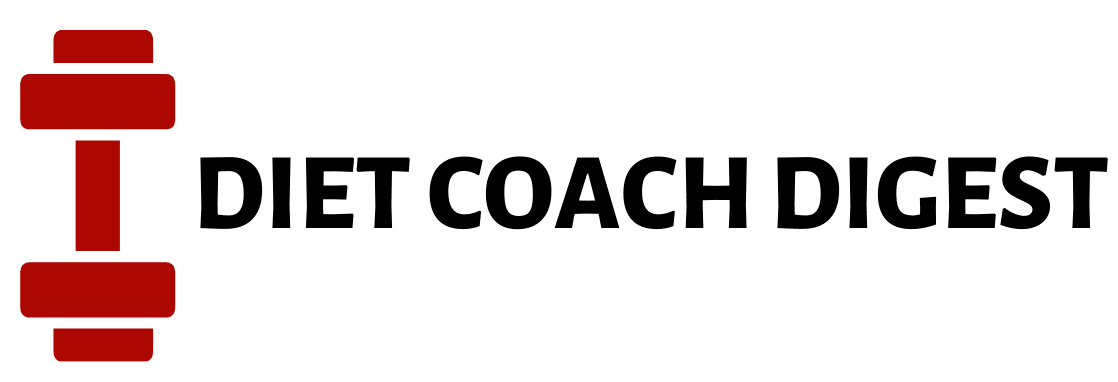Unlocking the Secrets to Building Lean Muscle Mass Effectively

- Should You Train To Muscle Failure Every Set? What You Need To Know - March 4, 2025
- Nutrition in a Hurry: Top Post-Workout Snacks for Active People - February 20, 2025
- 15 Healthy Meal Prep Recipes: Your Weight Loss Made Easy - February 18, 2025
Are you ready to transform your physique and gain impressive lean muscle mass? In this article, you’ll discover the proven strategies for sculpting a stronger, more defined body. With practical tips on nutrition, exercise routines, and recovery, you’ll have everything you need to fuel your muscles and see results faster. Get ready to unlock the secrets that fitness enthusiasts and experts swear by, and start your journey towards a fitter, more muscular you today. Have you ever wondered how to build lean muscle mass effectively and efficiently? You’re not alone! Whether you’re new to the gym or a seasoned fitness enthusiast, the quest for lean muscle mass can sometimes seem elusive. This article aims to demystify the process and provide you with actionable tips to help you on your journey.
The Basics of Muscle Growth
To effectively build lean muscle mass, it’s crucial to understand the fundamentals. Muscle growth, also known as hypertrophy, occurs when muscle fibers sustain damage through exercise and repair themselves to become stronger and larger. Let’s explore key factors that contribute to muscle growth.
The Role of Resistance Training
Resistance training is the cornerstone of muscle growth. This involves working against a force to cause muscle contraction, which helps in breaking down muscle fibers. This breakdown is essential for muscle repair and growth.
Types of Resistance Training:
- Free weights (dumbbells, barbells)
- Machines
- Bodyweight exercises (push-ups, pull-ups)
Importance of Progressive Overload
Progressive overload is the practice of gradually increasing the stress on your muscles over time. Whether it’s through adding more weight, increasing reps, or amplifying intensity, progressive overload ensures your muscles are continuously challenged.
Tips for Implementing Progressive Overload
- Increment weights by small amounts, like 2.5-5 lbs, every few sessions.
- Aim to increase reps within the same weight range before adding more weight.
- Track your progress to ensure you’re consistently improving.
Nutrition: The Building Blocks
Nutrition is a crucial aspect of building lean muscle mass. Without the right nutrients, your muscles won’t have the materials they need to grow and repair. Understanding what to eat and when can make a big difference.
Macronutrients: Proteins, Carbs, and Fats
| Nutrient | Role in Muscle Growth | Sources |
|---|---|---|
| Protein | Repairs and builds muscle tissues | Chicken, Beef, Fish, Eggs, Beans |
| Carbohydrates | Provides energy for workouts and recovery | Rice, Oats, Fruits, Vegetables |
| Fats | Supports hormone production and overall health | Avocado, Nuts, Olive Oil, Fatty Fish |
Protein Intake: How Much Do You Need?
Protein is vital for muscle repair and growth. General recommendations for protein intake for those aiming to build muscle are about 1.6 to 2.2 grams per kilogram of body weight per day.
Easy Ways to Increase Protein Intake
- Include a source of protein in every meal.
- Opt for protein-rich snacks like Greek yogurt or nuts.
- Consider protein supplements if you struggle to meet your daily requirements.
Training Techniques for Building Lean Muscle
When it comes to effective muscle building, employing various training techniques can help enhance your results and keep your workouts interesting.
Compound vs. Isolation Exercises
Understanding the difference between compound and isolation exercises is crucial for building a well-rounded routine.
Compound Exercises
These involve multiple joints and muscle groups.
Examples:
- Squats: Targets legs, glutes, and lower back.
- Bench Press: Works the chest, shoulders, and triceps.
- Deadlifts: Engages the back, legs, and core.
Isolation Exercises
Focuses on a single muscle group.
Examples:
- Bicep Curls: Targets the biceps.
- Leg Extensions: Works the quadriceps.
- Tricep Pushdowns: Isolates the triceps.
High-Intensity Interval Training (HIIT)
HIIT involves alternating short bursts of intense exercise with lower-intensity recovery periods. It’s excellent for improving cardiovascular health and can help in muscle retention while losing fat.
Periodization Techniques
Periodization is the systematic planning of athletic training. It involves varying your training variables (intensity, volume, and type) over specific periods to maximize performance and prevent overtraining.
Types:
- Linear Periodization: Gradual increments in intensity over time.
- Non-linear (Undulating) Periodization: Frequent variations in intensity and volume.

The Importance of Rest and Recovery
Why Recovery Matters
Muscle growth doesn’t happen in the gym but during rest. Giving your body adequate time to repair and grow stronger is essential.
Effective Recovery Strategies
- Ensure 7-9 hours of sleep per night.
- Incorporate rest days into your schedule.
- Consider techniques like foam rolling or massage for muscle relaxation.
Sleep and Muscle Growth
Sleep is when the body repairs and builds muscle. During deep sleep stages, growth hormone levels increase, aiding in muscle recovery.
Tips for Better Sleep
- Create a bedtime routine to wind down.
- Avoid screens an hour before bedtime.
- Keep your sleep environment cool and dark.
Supplements: Helpful or Hype?
Not all supplements are created equal. Some can genuinely aid in muscle growth, while others may be a waste of money. Here’s a breakdown of popular supplements and their efficacy.
Protein Powders
Protein powders like whey, casein, and plant-based proteins can help you meet your daily protein requirements, especially if you’re unable to get enough from food alone.
Creatine
Creatine is one of the most researched supplements and is proven to enhance strength, increase lean muscle mass, and aid in quicker recovery during training.
Branched-Chain Amino Acids (BCAAs)
BCAAs are essential amino acids that help reduce muscle soreness and aid in muscle recovery.
Multivitamins and Omega-3s
A good multivitamin and omega-3 supplement can help fill any nutritional gaps in your diet, supporting overall health and muscle growth.

Common Mistakes to Avoid
Building muscle effectively means avoiding common pitfalls that can derail your progress.
Overtraining
More isn’t always better. Overtraining can lead to injuries and hinder muscle growth. Listen to your body and give it time to rest.
Signs of Overtraining
- Constant fatigue
- Decreased performance
- Increased irritability
Poor Form
Using poor form not only hampers your progress but also increases the risk of injury. Focus on mastering the correct form before increasing weights.
Tips for Maintaining Good Form
- Watch instructional videos.
- Ask a trainer for guidance.
- Start with lighter weights.
Inconsistent Diet
You can’t out-train a poor diet. Consistency in your eating habits is key to seeing the results you want.
Easy Fixes
- Meal prep to ensure healthy options are always available.
- Keep healthy snacks handy.
- Plan your meals around your workout schedule.
Setting Realistic Goals and Tracking Progress
Setting achievable goals and tracking your progress is essential to staying motivated and ensuring you’re on the right path.
SMART Goals
SMART goals are Specific, Measurable, Achievable, Relevant, and Time-bound. Applying this framework can set you up for success.
Example of a SMART Goal:
- Specific: Increase bench press by 20 lbs.
- Measurable: Track the weight lifted each session.
- Achievable: Add small increments of weight each week.
- Relevant: Helps build upper body strength.
- Time-bound: Achieve this within 12 weeks.
Tracking Progress
Keeping a record of your workouts, diet, and progress can help you identify what’s working and what’s not.
Methods for Tracking
- Fitness Apps: MyFitnessPal, Strava
- Training Journal: Write down exercises, sets, reps, and weight.
- Photos: Take progress pictures every month.

Final Thoughts
Building lean muscle mass effectively requires a blend of proper training, nutrition, rest, and recovery. It’s not just about lifting weights; it’s about making informed choices that will help you reach your goals efficiently and sustainably. Remember, consistency is key. Stick to your plan, avoid common pitfalls, and soon enough, you’ll start to see the results you’ve worked so hard for.
Ready to unlock the secrets to building lean muscle mass effectively? Start implementing these tips today, and see how they can transform your fitness journey!
Table of Contents







